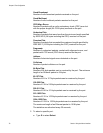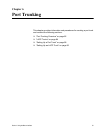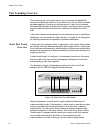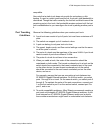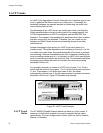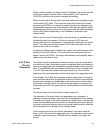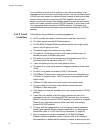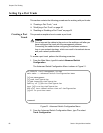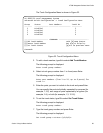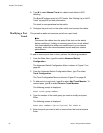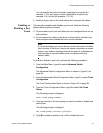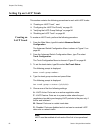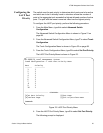Chapter 6: Port Trunking
86 Section I: Using the Menus Interface
Two conditions must be met in order for a port that is a member of an
aggregate trunk to function in the standby mode. First, the number of ports
in the trunk must exceed the highest allowed number of active ports and,
second, the port must be receiving LACPDU packets from the other
device. A port functioning in the standby mode does not forward network
traffic, but it does continue to send LACPDU packets. If a port that is part
of a trunk group does not receive LACPDU packets, it functions as a
normal Ethernet port and forwards network packets along with LACPDU
packets.
LACP Trunk
Guidelines
Following are the guidelines for creating aggregators:
LACP must be activated on both the switch and the other device.
The other device must be 802.3ad-compliant.
The AT-9000/24 Gigabit Ethernet switch supports up to eight active
ports in a trunk group at a time.
The switch supports a maximum of four trunks.
The ports of a trunk group must be of the same medium type: all
twisted pair ports or all fiber optic ports.
The ports of a trunk can be consecutive (for example ports 5-9) or
nonconsecutive (for example, ports 4, 8, 11, 20).
A port can belong to only one trunk group at a time.
The ports of an trunk group must be untagged members of the same
VLAN.
An LACP trunk does not forward VLAN ID information.
10/100Base-TX twisted pair ports must be set to Auto-Negotiation or
100 Mbps, full-duplex mode. LACP trunking is not supported in half-
duplex mode.
100Base-FX fiber optic ports must be set to full-duplex mode.
You can create a trunk group that includes transceivers with
1000Base-X fiber optic ports.
Only those ports that are members of a trunk group transmit LACPDU
packets.
A port that is a member of a trunk group functions as part of an
aggregate trunk only if it receives LACPDU packets from the remote
device. If it does not receive LACPDU packets, it functions as a regular
Ethernet port, forwarding network traffic while also continuing to
transmit LACPDU packets.
The port with the highest priority in a trunk group carries broadcast
packets and packets with an unknown destination. For background
information, refer to “LACP Port Priority Parameter” on page 85.
Prior to creating a trunk group between an AT-9000/24 Gigabit
Ethernet switch and another vendor’s device, refer to the vendor’s
documentation to determine the maximum number of active ports the



